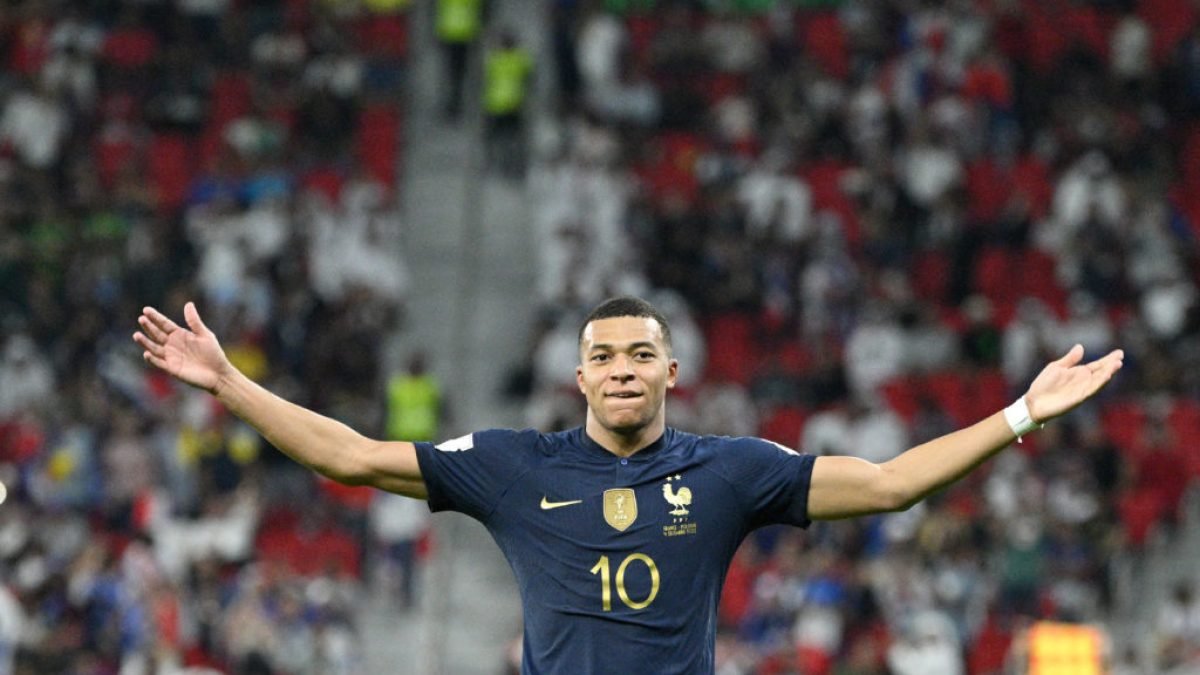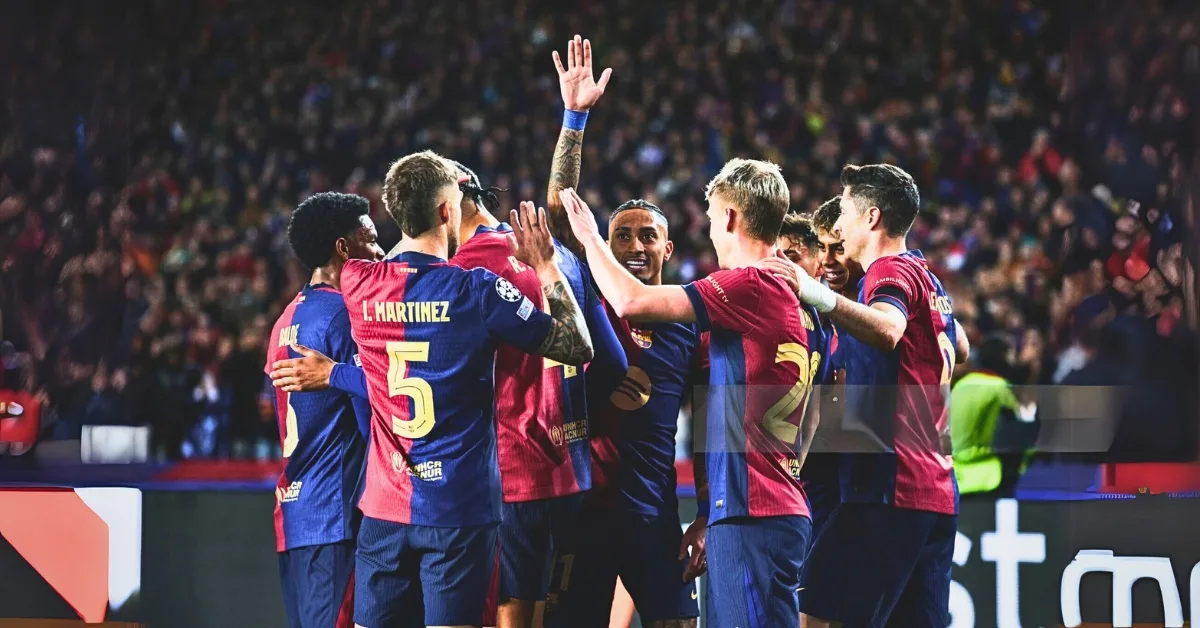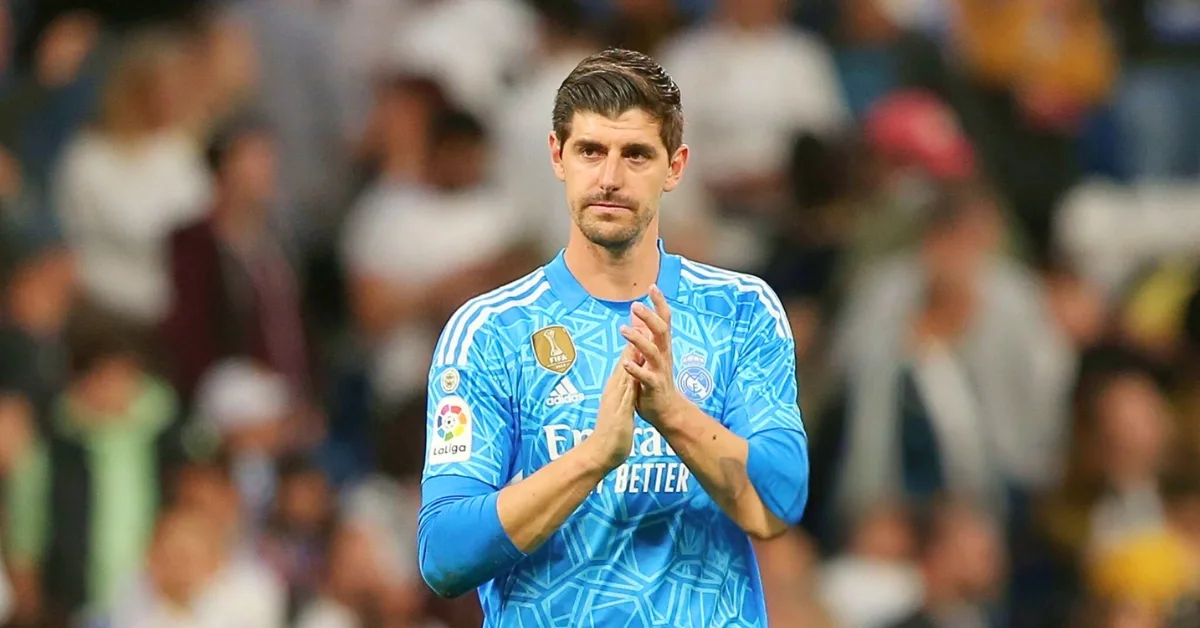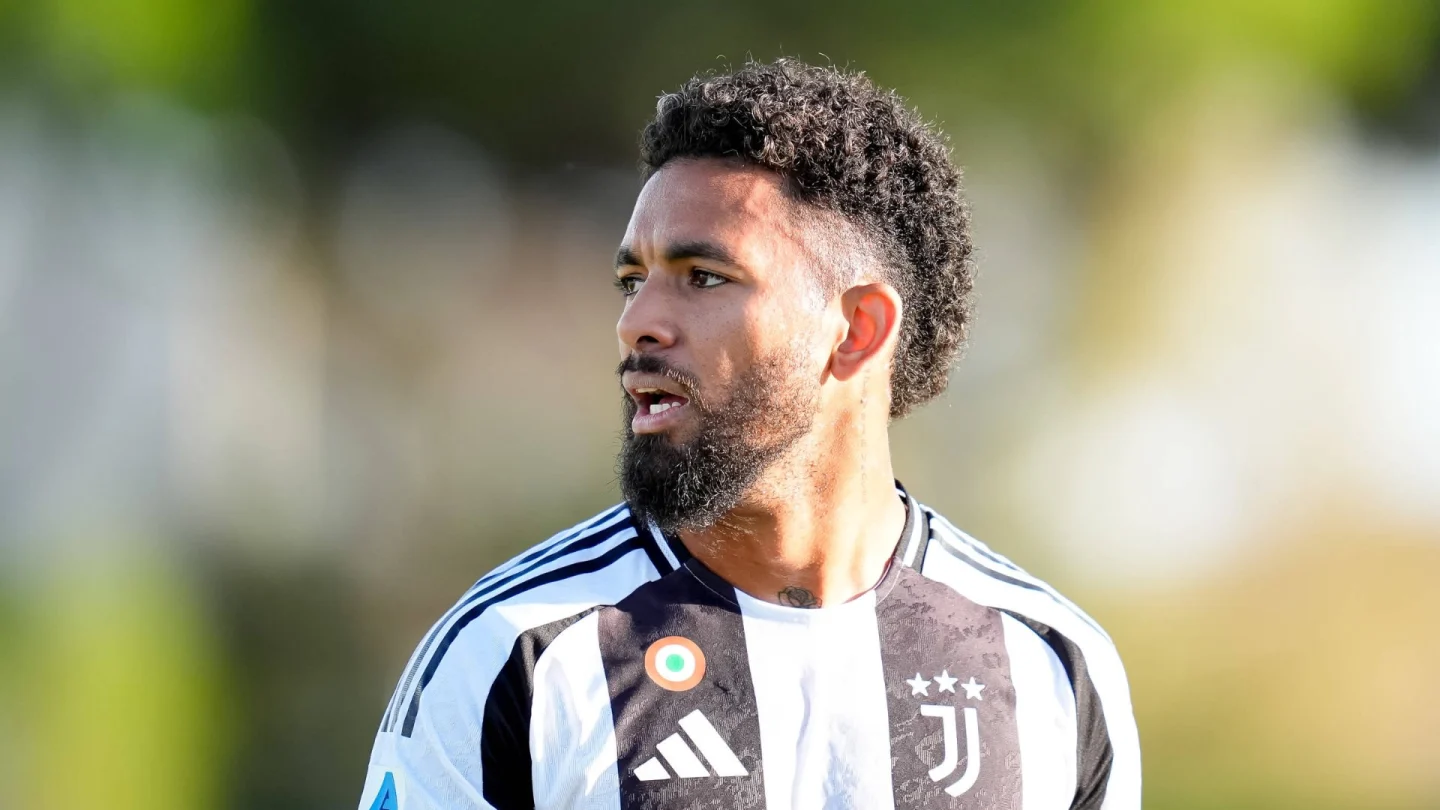Kylian Mbappe explosive speed and goal-scoring prowess in modern football have set him apart as one of the most formidable players. His ability to change the course of a game with his agility and precision has earned him numerous accolades and admiration from fans worldwide. His remarkable talent and consistent performance have not only made him a key player for Paris Saint-Germain but also a crucial asset for the French national team, solidifying his status as a global football icon. Kylian Mbappe explosive speed and goal-scoring prowess in modern football have set him apart as one of the most formidable players.
The Role of Genetics and Training in Developing His Explosive Pace
Mbappe speed is due to natural talent and relentless training. Genetically, he possesses a rare combination of fast-twitch muscle fibers, low body fat, and an optimal muscle-to-weight ratio, which allows him to generate explosive acceleration bursts. However, raw talent alone is not enough—his rigorous training regimen is designed to enhance his speed even further.
From sprint drills and plyometric exercises to agility-focused workouts, Mbappé’s training prioritizes acceleration, reaction time, and endurance. He also works on his running mechanics to minimize energy loss, ensuring his speed remains consistent throughout a match. His ability to maintain top speed while dribbling at full throttle is a testament to both his natural ability and disciplined training.
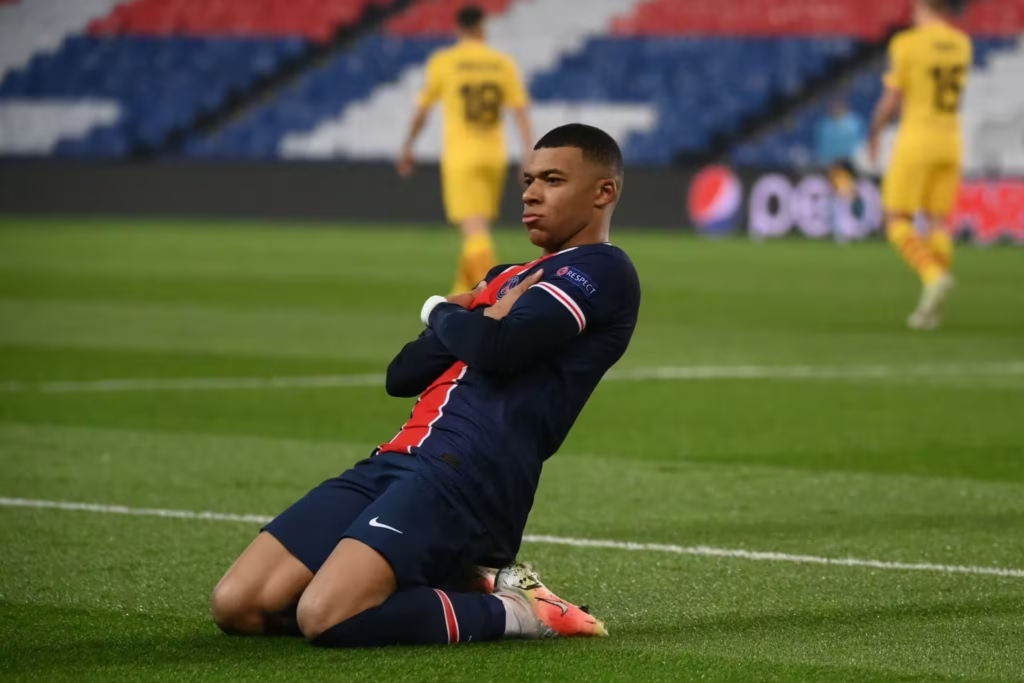
How Mbappe Speed Changes the Dynamics of an Entire Match
Mbappe pace is more than just a physical advantage—it is a tactical weapon. His speed forces defenders to drop deeper, creating space for his teammates to operate in midfield. Teams often double-mark him, which frees up other attackers, making PSG or France’s offensive play more unpredictable.
His ability to transition from defense to attack within seconds is another game-changer. Whether it’s a breakaway goal or stretching defenses wide, Mbappe speed ensures that his team is always a threat, even from seemingly defensive positions. His presence alone shifts how opponents approach a match, forcing them to be more cautious and reactive rather than proactive.
Comparing Mbappe Speed to Other Football Legends and Modern Stars
While football has seen many fast players, Mbappé’s combination of speed and technical skill sets him apart. Compared to legends like Thierry Henry and Cristiano Ronaldo in their primes, Mbappé is arguably quicker over short distances, with acceleration that rivals sprinting specialists.
Modern stars Erling Haaland and Vincius Junior possess extraordinary pace. However, Mbappé’s ability to combine his speed with his dribbling, finishing, and tactical awareness makes him the most complete speedster in the game. His top speed of 38 km/h (23.6 mph) puts him among the fastest players in football history, proving his athleticism.
The Future of Football Speed: Is Mbappe Setting a New Standard?
Mbappé’s success has set a benchmark for football’s future, where speed is becoming more essential. Young players are now focusing on developing their acceleration and sprinting abilities, recognizing that the modern game demands quick transitions and rapid attacking play.
With advancements in sports science, nutrition, and training techniques, future generations may push speed boundaries even further. However, Mbappé remains the gold standard—a player who has successfully fused pace, intelligence, and skill to dominate the highest levels of football.
His speed isn’t just a personal advantage—it’s changing the way football is played. This proves that in the modern era, acceleration and agility can be just as significant as technical brilliance.
Kylian Mbappe Speed: A Weapon for Goal Scoring and Breaking Defenses
In modern football, speed has become one of the most valuable attributes for an attacking player. Kylian Mbappé embodies this principle better than anyone. His ability to burst past defenders, create space, and finish clinically makes him one of the most dangerous forwards in the world. Whether playing for Paris Saint-Germain or the French national team, Mbappé’s pace keeps defenders on the edge. But what makes his speed so effective, and can defenders stop him?
The Importance of Speed in Modern Football and How Mbappe Uses It Effectively
Football has evolved into a faster, more dynamic game where quick transitions and counter-attacks often decide matches. Mbappé thrives in this environment, using his acceleration to exploit defensive weaknesses. His ability to sprint from a standing start to a full sprint in seconds gives him an edge over most defenders, who struggle to match his explosiveness.
Unlike traditional fast players who rely solely on straight-line speed, Mbappé combines pace with technical ability. His dribbling at high velocity is exceptional, allowing him to weave through defenders while maintaining control. This unique blend of speed and skill makes him a nightmare for opposition teams. He is capable of turning a defensive situation into a goal-scoring opportunity within seconds.
Key Examples of Mbappé Outrunning Defenders to Score Goals
Throughout his career, Mbappé has delivered countless moments of brilliance where his speed was the decisive factor. Some iconic examples include:
- 2018 FIFA World Cup vs. Argentina: In one of the most famous displays of raw speed, Mbappé sprinted past Argentina’s entire defense in his own half, winning a crucial penalty and later scoring twice to knock Lionel Messi’s team out of the tournament.
- Champions League 2021 vs. Barcelona: Against a world-class Barcelona side, Mbappé tore through their defense, scoring a stunning hat-trick that left defenders helpless. His ability to change direction while sprinting made him almost impossible to contain.
- Ligue 1 vs. Marseille (Le Classique): In one of PSG’s fiercest rivalries, Mbappé has repeatedly used his pace to get behind defenses, often scoring in one-to-one situations by accelerating past the last defender before calmly finishing.
These moments highlight how his speed is not just a physical asset but also a strategic tool that allows him to dismantle defenses at the highest level.
How His Acceleration Creates Space for Teammates and Opens Up Attacking Opportunities
Mbappé’s speed doesn’t just benefit him—it transforms his entire team’s attacking structure. Defenders, aware of his pace, often drop deeper to avoid being caught out. This defensive shift creates more space in midfield, allowing creative players like Neymar, Lionel Messi (during his PSG days), and Antoine Griezmann with France to operate freely.
His quick movements also force defenders into difficult decisions. If they step up to challenge him, he can sprint past them. If they stay back, he can dictate the play. This unpredictability makes him an excellent attacking asset, as he can score himself or set up teammates with perfectly timed runs and assists.
Tactical Advantages for PSG and France When Utilizing Mbappe Pace
PSG and the French national team have built tactics around Mbappé’s explosive speed.
- Quick Counter-Attacks: When defending deep, both teams can rely on Mbappé to launch rapid counter-attacks, punishing opponents who commit too many players forward.
- High Pressing and Recovery Runs: His pace isn’t just offensive—he also uses it to press defenders, forcing mistakes that lead to quick goal-scoring opportunities.
- Wide Play and Cut-Ins: Often deployed on the left wing, Mbappé uses his speed to cut inside, curling shots into the far corner or delivering pinpoint passes to teammates inside the box.
By positioning him in ways that maximize his speed advantage, PSG and France create a tactical imbalance that few teams can neutralize.
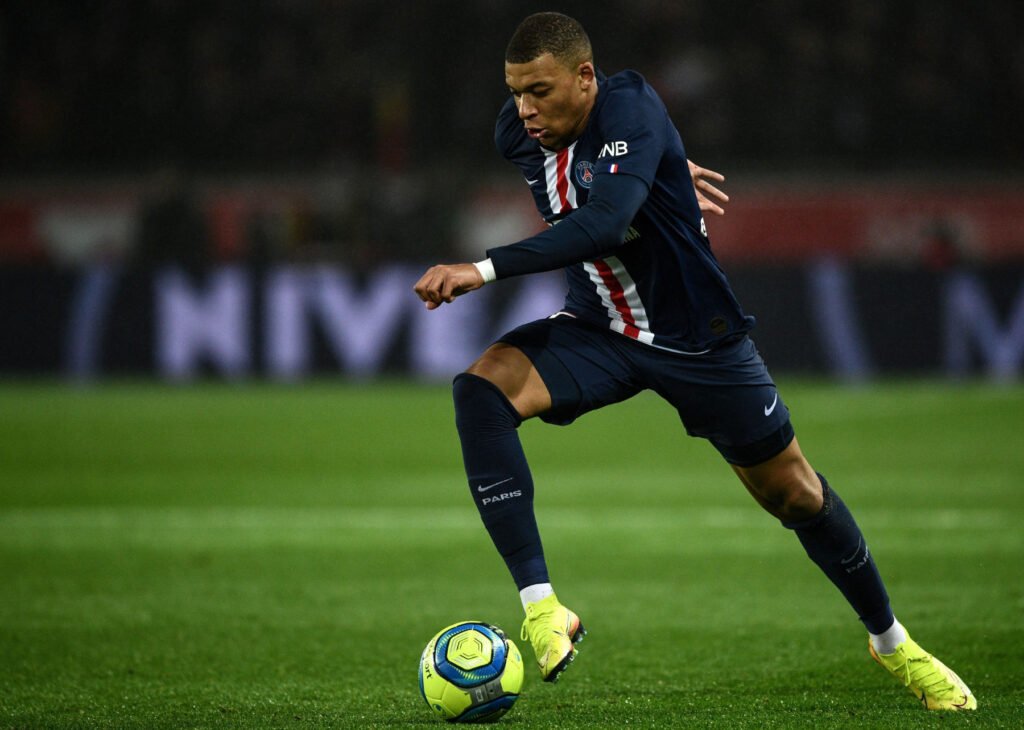
Can Defenders Counteract Mbappé’s Speed?
Neutralizing Mbappé is one of football’s hardest challenges. While defenders can counter his pace by:
- Positioning deeper to prevent through balls
- Double-marking strategies
- Focusing on physical challenges to slow him down
These tactics are rarely foolproof. Mbappé’s acceleration, agility, and intelligence allow him to adapt and exploit defenses. Only a handful of elite defenders, such as Virgil van Dijk or Kyle Walker, have contained him—but even they can struggle when he’s in full flight.
Ultimately, Kylian Mbappé’s speed is more than just a physical attribute—it’s a game-changing weapon that forces defenders to adjust their entire approach. Whether through counter-attacks, dribbling runs, or goal-scoring bursts, his pace remains one of the most feared attributes in modern football.
Kylian Mbappe Goal-Scoring Prowess: A Combination of Speed, Technique, and Instinct
Kylian Mbappé’s Goal-Scoring Prowess: A Combination of Speed, Technique, and Instinct
Kylian Mbappé has established himself as one of football’s most lethal goal scorers. He blends raw speed, refined technique, and natural instinct to consistently find the net back. Whether finishing off a blistering counter-attack, converting a precise through ball, or weaving past defenders for a solo effort, his ability to score in a variety of ways makes him one of the most complete forwards in the modern game. But what truly sets him apart from his peers? Let’s break down the key factors behind Mbappé’s remarkable goal-scoring ability.
Breaking Down How Mbappé’s Speed Enhances His Goal-Scoring Ability
Speed is often seen as an asset for wingers, but Mbappé has turned it into a fundamental part of his goal-scoring arsenal. His explosive acceleration allows him to:
- Beat the offside trap with well-timed runs behind defensive lines.
- Exploit the spaces left by high-pressing teams, making him particularly effective against aggressive defenses.
- Turn defensive situations into attacking opportunities, carrying the ball from deep areas and finishing with precision.
Unlike many fast players who struggle with control at high speeds, Mbappé maintains remarkable composure while dribbling and finishing, making him deadly in transition.
The Types of Goals Mbappé Scores: Counter-Attacks, Through Balls, and Solo Runs
Mbappé’s versatility in front of goal is a key reason for his consistent success. He scores in numerous ways, including:
- Counter-attacks: His pace makes him one of the most feared counter-attacking players in football. A single clearance or long pass can see him sprint past defenders and finish clinically.
- Through Balls: His timing and anticipation allow him to latch onto perfectly weighted passes from playmakers, creating one-to-one situations where he rarely misses.
- Solo Runs: One of his signature moves is picking up the ball in wide areas, cutting inside, and using his speed and dribbling skills to beat defenders before finishing.
- Poacher’s Goals: While he runs at defenses, Mbappé also possesses superior positional awareness, allowing him to tap in rebounds and capitalize on defensive errors inside the box.
- Long-Range Strikes: Although not his primary method of scoring, he has shown the ability to unleash powerful shots from distance, adding yet another weapon to his goal-scoring toolkit.
Analyzing His Composure in Front of the Goal Despite High-Speed Situations
What separates Mbappé from many fast players is his ability to remain calm and clinical under pressure. Even when sprinting at full speed, he demonstrates:
- Controlled finishing: Instead of blasting the ball, he often opts for precise, well-placed shots.
- One-on-one mastery: His ability to read goalkeepers’ movements helps him pick the most effective finishing option, whether it’s a chipped shot, a low-driven strike, or rounding the keeper.
- Decision-making at high speed: Many players lose their composure when closing in on goal, but Mbappé’s footballing intelligence ensures he makes the right choices in crucial moments.
Statistical Breakdown: Goals Per Game, Types of Goals, and His Finishing Technique
Mbappé’s numbers reflect his elite goal-scoring ability. While statistics fluctuate season by season, some key trends highlight his efficiency:
- Goals per game: Consistently maintains a goal ratio of 0.7 to 0.9 goals per game in domestic and international competitions.
- Shot conversion rate: Averages around 20%, showing efficiency in front of goal.
- Big game performances: Has scored in Champions League knockout stages, World Cup finals, and domestic cup finals, proving he delivers on the big stages.
- Diverse finishing techniques: Scores with both feet, headers, and even acrobatic finishes, making him unpredictable for goalkeepers.
These stats underline not just his ability to score frequently, but also his effectiveness in different scenarios.
Comparing Mbappé’s Goal-Scoring Record to Other Modern Football Forwards
Mbappé’s numbers put him among the elite goal scorers of this generation. How does he compare to other top forwards?
- Cristiano Ronaldo & Lionel Messi: While Mbappé has not yet matched their career numbers, his goal-scoring rate at a young age is similar to their early years. His ability to score in big matches also mirrors their legendary status.
- Erling Haaland: Haaland is known for his goal-poaching instincts, but Mbappé’s all-around ability—dribbling, creativity, and pace—makes him a more complete forward.
- Robert Lewandowski & Karim Benzema: These strikers are more traditional finishers, excelling at positioning and link-up play. Mbappé, on the other hand, brings unpredictability and speed that they lack.
At just 25, Mbappé is already competing with the elite, and his goal-scoring prowess is expected to grow even further in the coming years.
Kylian Mbappé’s goal-scoring ability is not just about raw speed—it’s a blend of technical precision, instinct, and intelligence. His ability to score from different situations, maintain composure at high speeds, and consistently deliver in big matches makes him one of football’s most feared attackers. As he evolves, he can redefine goal-scoring standards for future generations.

How Kylian Mbappe Speed Changed the Game for PSG and France
Kylian Mbappé’s electrifying speed is one of the most defining attributes of his game. This makes him a nightmare for defenders and a priceless asset for Paris Saint-Germain and the French national team. His acceleration and agility allow him to break defensive lines, launch counter-attacks, and create goal-scoring opportunities at an elite level. But how exactly does his speed shape his teams’ tactical approach, and what are opponents doing to stop him?
Mbappe Contribution to PSG’s Fast-Paced Attacking Style
Paris Saint-Germain’s attacking philosophy is built on fluid movement, quick transitions, and lethal finishing—elements that perfectly suit Mbappé’s playing style. As one of the fastest players in the world, he enables PSG to:
- Dominate counter-attacks: When PSG regain possession, they immediately look for Mbappé to exploit spaces behind the opposition’s defense. His speed allows PSG to transition from defense to attack in seconds.
- Stretch defensive lines: Defenders track his runs, creating gaps that PSG’s playmakers—such as Neymar and Ousmane Dembélé—can exploit.
- Capitalize on high defensive lines: Teams that play a high press against PSG risk leaving space behind, which Mbappé punishes by sprinting onto long balls from midfielders like Vitinha or Marco Verratti (before his departure).
- Utilize wide areas: When deployed on the left wing, Mbappé’s pace allows him to beat full-backs easily and cut inside to create scoring opportunities.
His speed is not just about running fast—it influences PSG’s entire tactical setup, forcing teams to rethink their defensive approach.
His Role in France’s Counter-Attacks During the 2018 World Cup and Euro 2020
Mbappé’s blistering pace was crucial to France’s success at the 2018 FIFA World Cup. He played a key role in Didier Deschamps’ counter-attacking system. Some key examples include:
- Vs. Argentina (Round of 16): Mbappé’s famous solo run from his own half led to a penalty, showcasing how his speed can single-handedly change a match.
- Vs. Croatia (Final): Scoring in a World Cup final at just 19, Mbappé’s quick movements helped France exploit Croatia’s tiring defense.
Even during Euro 2020, despite France’s earlier-than-expected exit, Mbappé’s pace remained a crucial asset in launching fast breaks, particularly in combination with Karim Benzema and Antoine Griezmann.
Tactical Breakdown: How Coaches Use Mbappé’s Speed in Different Formations
Mbappé’s versatility allows coaches to utilize his speed in various tactical setups:
- 4-3-3 Formation (PSG & France)
- As a left winger, Mbappé cuts inside onto his right foot, using his acceleration to beat defenders and score.
- His presence on the wing forces defenses to shift, creating space for the striker.
- 4-2-3-1 Formation (France)
- Positioned as a wide forward, Mbappé has more freedom to drift centrally or diagonally.
- This formation allows him to thrive on counter-attacks, receiving long balls in transition.
- 3-4-3 Formation (Occasionally used by PSG)
- With wing-backs supporting him, Mbappé can stay higher up the pitch, ready to exploit gaps left by defenders pushing forward.
- This setup maximizes his speed on the break, making PSG deadly in transition.
His adaptability means that regardless of the formation, coaches always look for ways to use his speed as a primary offensive weapon.
Key Partnerships That Maximize Mbappé’s Pace in Club and National Team Football
Mbappé’s effectiveness is amplified when he plays alongside intelligent passers and creative teammates. Some of his most influential partnerships include:
- Neymar (PSG): Their chemistry allows for quick one-twos and combination play, often leading to breakaways.
- Lionel Messi (PSG 2021-23): Messi’s vision and passing ability perfectly complement Mbappé’s runs behind defenders.
- Karim Benzema (France 2021-22): Benzema’s link-up play created space for Mbappé to make devastating runs from behind.
- Antoine Griezmann (France): Griezmann’s ability to drop deep and deliver precise through balls plays directly into Mbappé’s strengths.
These partnerships highlight how playmakers and strikers alike can enhance Mbappé’s speed by supplying him with the right service.
How Teams Are Attempting to Stop Mbappé’s Speed on the Field
Despite his dominance, teams have tried various methods to contain Mbappé:
- Deep defensive blocks:
- Teams like Atlético Madrid and Bayern Munich defend deeper to minimize space behind, reducing Mbappé’s ability to sprint into open areas.
- Double marking & Physical Play:
- Defenders like Kyle Walker and Virgil van Dijk use their physicality and positioning to slow him down and limit his explosive bursts.
- Tactical Fouls & Pressing Midfielders:
- Some teams deploy defensive midfielders to foul Mbappé early before he reaches top speed.
- Forcing Him Wide:
- Opponents try to force him into wider positions where his shooting angles are reduced, making it harder to score.
Even with these strategies, few teams have consistently stopped Mbappé. His adaptability and ability to exploit even the smallest defensive lapses ensure that he remains one of the most difficult players to contain.
Kylian Mbappé’s speed is not just an asset—it’s a game-changing force that shapes PSG and France’s gameplay. His ability to stretch defenses, launch counter-attacks, and link up with top playmakers makes him one of the most dangerous players in the world. While teams continue to search for ways to neutralize his pace, Mbappé’s intelligence and technical ability ensure that he remains a dominant force in modern football.
Kylian Mbappé’s Explosive Pace: From Young Prodigy to the World’s Fastest Footballer
Kylian Mbappé’s extraordinary speed sets him apart from his peers, making him one of the most feared attackers in world football. His ability to accelerate past defenders, execute rapid direction changes, and maintain control of the ball at top speed has made him a generational talent. But how did Mbappé develop this explosive pace? When did the football world first notice? And how has his speed evolved over the years?
A Look at Mbappé’s Early Development and When His Speed Became a Noticeable Asset
Even as a child, Mbappé displayed remarkable athleticism. Born in Bondy, France, he honed his skills at AS Bondy under his father, Wilfried Mbappé. From an early age, his acceleration and agility stood out, allowing him to glide past opponents effortlessly.
- Clairefontaine Academy: At the prestigious French football academy, Mbappé’s speed became a defining feature of his game. Coaches noted his ability to burst past defenders easily, making him a standout among his peers.
- AS Monaco’s Youth Setup: By the time he joined Monaco’s academy, his pace was already a major weapon. His ability to break defensive lines in one sprint makes him one of the most exciting young prospects in European football.
Mbappé’s combination of raw pace and technical ability ensured that he wasn’t just a fast player—he was a smart and effective one.
Key Moments When His Speed First Caught the World’s Attention
Several defining moments cemented Mbappé’s reputation as one of the fastest players in football history:
- 2016-17 UEFA Champions League Breakout (AS Monaco vs Manchester City)
- At just 18 years old, Mbappé’s blistering run against Manchester City in the Champions League knockout stages left defenders struggling to keep up. His explosive pace helped Monaco eliminate City and announce himself to the world.
- 2018 FIFA World Cup: Solo Run vs Argentina
- Perhaps the most iconic display of his speed came against Argentina in the Round of 16. Mbappé sprinted from his own half, covering 70 meters in seconds before winning a penalty. His acceleration was compared to Olympic sprinters, leaving the world in awe.
- PSG’s Counter-Attacks in the Champions League (2019-2021)
- Throughout his time at PSG, Mbappé has consistently torched defenses in Europe’s top competition. His hat-trick against Barcelona in 2021 highlighted his speed and ability to outrun even elite defenders like Gerard Piqué.
Each of these moments showcased not just Mbappé’s pace but his ability to use it effectively in high-pressure situations.
How His Speed Has Evolved Over the Years and the Impact on His Playing Style
While Mbappé’s raw speed has always been a fundamental part of his game, his style of play has evolved significantly.
- Early Career (Monaco and PSG Days)
- Relied heavily on his ability to beat defenders in one-to-one situations.
- Focused on direct, explosive runs behind defensive lines.
- Played primarily as a winger, using his speed to cut inside and score.
- Mid-Career Evolution (PSG & France 2018-2022)
- Improved ball control at high speeds, making him more unpredictable.
- Developed better decision-making, choosing when to sprint and when to conserve energy.
- Started playing more centrally, allowing him to combine speed with intelligent movement in tight spaces.
- Present & Future (2023-Present)
- A more complete player who blends speed with technical ability.
- Uses his acceleration in bursts rather than constantly sprinting, preserving his stamina for crucial moments.
- Play with a more strategic approach, exploiting space rather than sheer pace.
This evolution has made Mbappé not just the fastest player on the pitch, but one of the smartest at using his physical gifts effectively.
A Comparison of Mbappé’s Speed at Different Stages of His Career
Mbappé’s top recorded speeds over the years highlight his consistency as one of the world’s fastest footballers.
- 2017 (Monaco): 35 km/h
- 2018 (World Cup, France): 38 km/h (vs. Argentina).
- 2021 (PSG, Champions League): 36 km/h (vs. Barcelona).
- 2022 (World Cup, France): 37.6 km/h (vs. Poland).
While his top speeds have remained relatively stable, his ability to maintain speed over longer distances and in different tactical setups has improved significantly.
The Importance of Maintaining Peak Physical Condition as a Speed-Driven Athlete
For a player like Mbappé, maintaining his pace requires rigorous physical conditioning. His training routine includes:
- Sprint drills: To maintain acceleration and explosive speed.
- Strength Training: Focus on lower-body power to improve sprint efficiency.
- Endurance Work: Helps him maintain speed deep into matches without fatigue.
- Flexibility and Recovery: Prevents injuries that could affect his sprinting ability.
As Mbappé matures, managing his physical conditioning will be crucial to ensuring that his explosive pace remains a defining weapon in his game.



